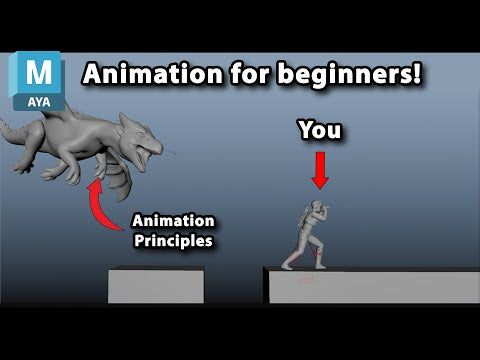Your Cart is Empty
Customer Testimonials
-
"Great customer service. The folks at Novedge were super helpful in navigating a somewhat complicated order including software upgrades and serial numbers in various stages of inactivity. They were friendly and helpful throughout the process.."
Ruben Ruckmark
"Quick & very helpful. We have been using Novedge for years and are very happy with their quick service when we need to make a purchase and excellent support resolving any issues."
Will Woodson
"Scott is the best. He reminds me about subscriptions dates, guides me in the correct direction for updates. He always responds promptly to me. He is literally the reason I continue to work with Novedge and will do so in the future."
Edward Mchugh
"Calvin Lok is “the man”. After my purchase of Sketchup 2021, he called me and provided step-by-step instructions to ease me through difficulties I was having with the setup of my new software."
Mike Borzage
Design Software History: The Evolution of Shading Languages: From Gouraud to Real-Time Ray Tracing and AI Integration
September 08, 2024 5 min read


The Genesis of Shading Languages
Early Beginnings
The concept of shading in computer graphics has a rich history that dates back to the earliest explorations of how to render three-dimensional objects on two-dimensional screens. Shading is the process of simulating the way light interacts with surfaces to create the illusion of depth, texture, and material properties. This concept evolved as computer graphics sought to move beyond simple wireframe representations.
One of the first significant breakthroughs in shading was Gouraud shading, developed by Henri Gouraud in 1971. This method involves interpolating vertex normals across the surface of a polygon to produce smooth shading effects. However, Gouraud shading had limitations, particularly in handling specular highlights, which prompted further innovations.
Phong shading, introduced by Bui Tuong Phong in 1973, addressed some of these shortcomings. Phong shading calculates illumination at each pixel, rather than at each vertex, resulting in more accurate representations of specular highlights. Phong shading laid the groundwork for more sophisticated shading techniques that would come later.
Pioneering Work
Ivan Sutherland, often regarded as the father of computer graphics, made significant contributions to the field with his development of the Sketchpad system in 1963. Sketchpad was groundbreaking as it introduced the concept of graphical user interfaces and demonstrated the potential of computer graphics in various applications, including design and engineering.
Turner Whitted's work in ray tracing further advanced the field of shading. In 1980, Whitted introduced a method for simulating the way light rays interact with surfaces, producing highly realistic images. Ray tracing calculates reflections, refractions, and shadows, making it a powerful tool for rendering photorealistic images. Whitted's contributions laid the foundation for future developments in shading and rendering techniques.
The Evolution of Shading Languages
Introduction of the RenderMan Shading Language (RSL)
The development of the RenderMan Shading Language (RSL) by Pixar marked a significant milestone in the history of shading languages. RSL was designed to provide artists and developers with a powerful and flexible tool for creating complex shading effects. Key contributors to RSL's development included Ed Catmull and Pat Hanrahan, who played pivotal roles in its design and implementation.
RSL had a profound impact on the animation and film industry, particularly with the release of "Toy Story" in 1995. As the first feature-length film entirely created using computer-generated imagery (CGI), "Toy Story" showcased the capabilities of RSL in producing lifelike characters and environments. The success of "Toy Story" cemented Pixar's reputation as a leader in computer graphics and animation.
Development of OpenGL Shading Language (GLSL)
The formation of the OpenGL Architecture Review Board (ARB) in 1992 marked the beginning of a new era in computer graphics. The ARB's goal was to develop a standard graphics API that would be widely adopted across different platforms. One of the key outcomes of this effort was the introduction of the OpenGL Shading Language (GLSL) in 2003.
GLSL brought programmability to the graphics pipeline, allowing developers to create custom shading effects for real-time rendering. Its adoption by the gaming industry and interactive applications had a significant impact, enabling more sophisticated graphics and immersive experiences. The flexibility and power of GLSL made it an essential tool for developers working on a wide range of graphics applications.
Advanced Shading Languages and Modern Innovations
High-Level Shading Language (HLSL)
Microsoft's development of the High-Level Shading Language (HLSL) for DirectX represented another major advancement in shading technologies. Introduced in 2002, HLSL provided developers with a high-level language for writing shaders, making it easier to create complex visual effects for games and real-time graphics applications.
Comparisons between HLSL and GLSL highlight their respective strengths and roles in the industry. While both languages serve similar purposes, HLSL is tightly integrated with the DirectX API, making it the preferred choice for developers working on Windows-based platforms. In contrast, GLSL's integration with OpenGL makes it more versatile and widely adopted across different operating systems.
Compute Shaders and GPGPU (General-Purpose Computing on Graphics Processing Units)
The rise of compute shaders marked a significant shift in the capabilities of graphics processing units (GPUs). Compute shaders allow developers to leverage the parallel processing power of GPUs for non-graphical computations, enabling a wide range of applications beyond traditional graphics rendering.
Industry leaders like John Carmack played a crucial role in pushing the capabilities of GPUs and advocating for their use in general-purpose computing (GPGPU). The advent of compute shaders has opened up new possibilities in fields such as scientific computing, data analysis, and artificial intelligence, demonstrating the versatility and power of modern GPUs.
The Future of Shading Languages
Emerging Technologies
The development of Vulkan and SPIR-V represents the next generation of shading languages and graphics APIs. Vulkan, introduced by the Khronos Group in 2016, offers a low-overhead, cross-platform API that provides developers with greater control over GPU resources. SPIR-V, a binary intermediate language for representing shaders, allows for more efficient execution and optimization of shader code.
Real-time ray tracing is another emerging technology that is set to revolutionize the field of computer graphics. NVIDIA's introduction of RTX technology has brought real-time ray tracing to the forefront, enabling stunning visual effects and unprecedented levels of realism in games and interactive applications. The integration of ray tracing into shading languages and graphics APIs is expected to drive further innovations in the industry.
Integration with Machine Learning and AI
Shading languages are increasingly being adapted for use in machine learning and artificial intelligence applications. The parallel processing capabilities of GPUs make them well-suited for training and executing complex AI models, and shading languages are being extended to support these new workloads.
Future trends in shading languages are likely to focus on enhancing their capabilities for AI and machine learning, as well as exploring new applications beyond traditional graphics. The ongoing evolution of shading languages will continue to play a critical role in driving advancements in computer graphics and related fields.
Conclusion
Summary of Key Developments
The history of shading languages is marked by a series of significant milestones and innovations. From the early beginnings of Gouraud and Phong shading to the pioneering work of Ivan Sutherland and Turner Whitted, the field has continually evolved to produce more sophisticated and realistic visual effects. The introduction of the RenderMan Shading Language (RSL) by Pixar and the development of OpenGL Shading Language (GLSL) were pivotal moments that advanced the capabilities of shading languages and their adoption in various industries.
Final Thoughts
As we look to the future, the ongoing evolution of shading languages will continue to shape the landscape of computer graphics and beyond. Emerging technologies like Vulkan and SPIR-V, as well as the integration of real-time ray tracing and AI, promise to drive further innovations and open up new possibilities. The critical role of shading languages in these advancements underscores their importance in the future of design software and the broader field of computer graphics.
Also in Design News

Animation for Beginners - Part 2: 12 Animation Principles you NEED to know
January 14, 2025 1 min read
Read More
ZBrush Tip: Enhancing 3D Model Precision with ZBrush's TrimCurve Tool
January 14, 2025 2 min read
Read More
Revit Tip: Utilizing Design Phases to Enhance Revit Project Efficiency and Collaboration
January 14, 2025 1 min read
Read MoreSubscribe
Sign up to get the latest on sales, new releases and more …


